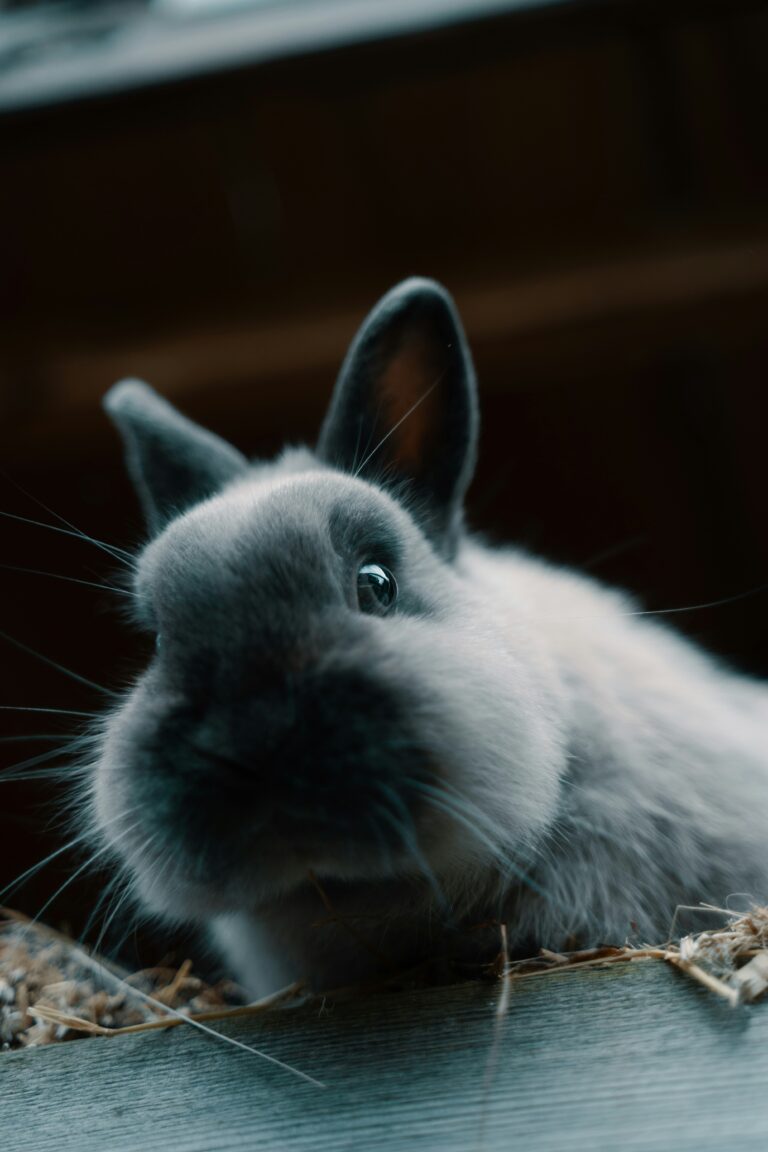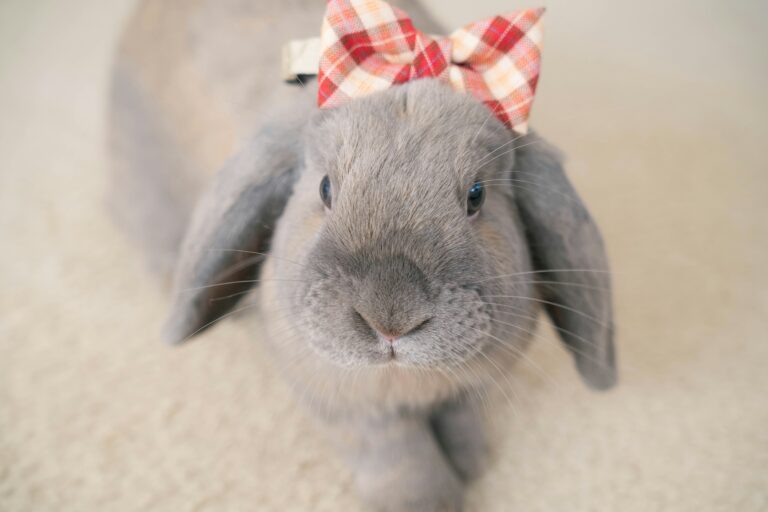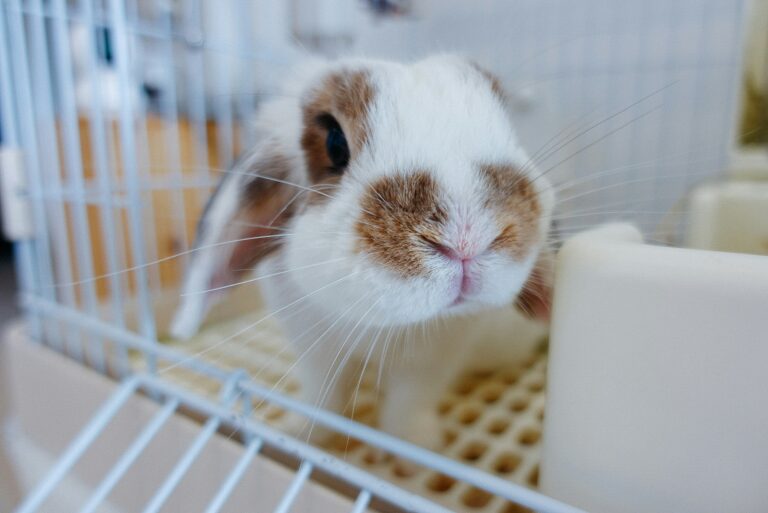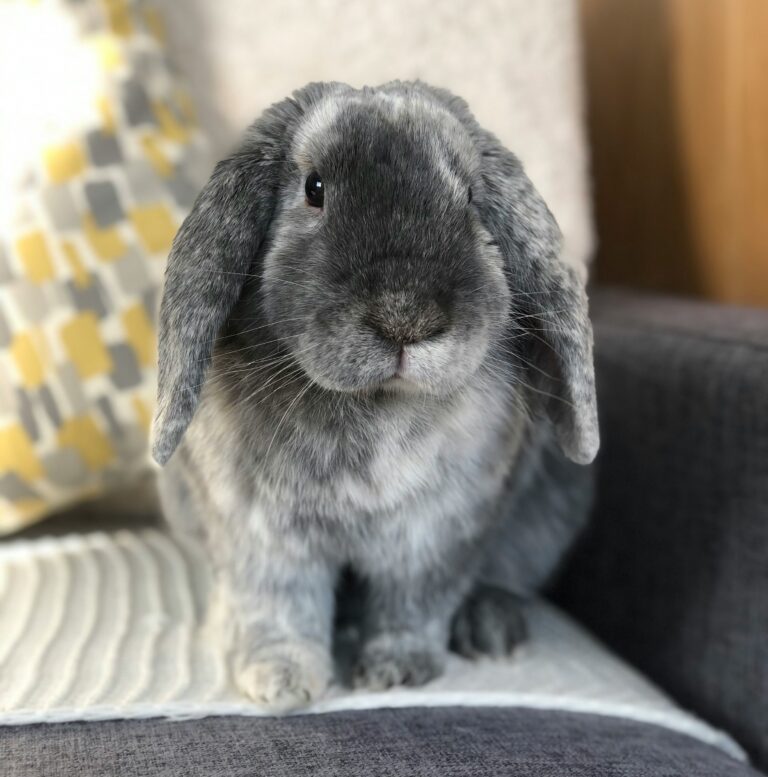How to Care for a Holland Lop Rabbit: A Complete Pet Care Guide
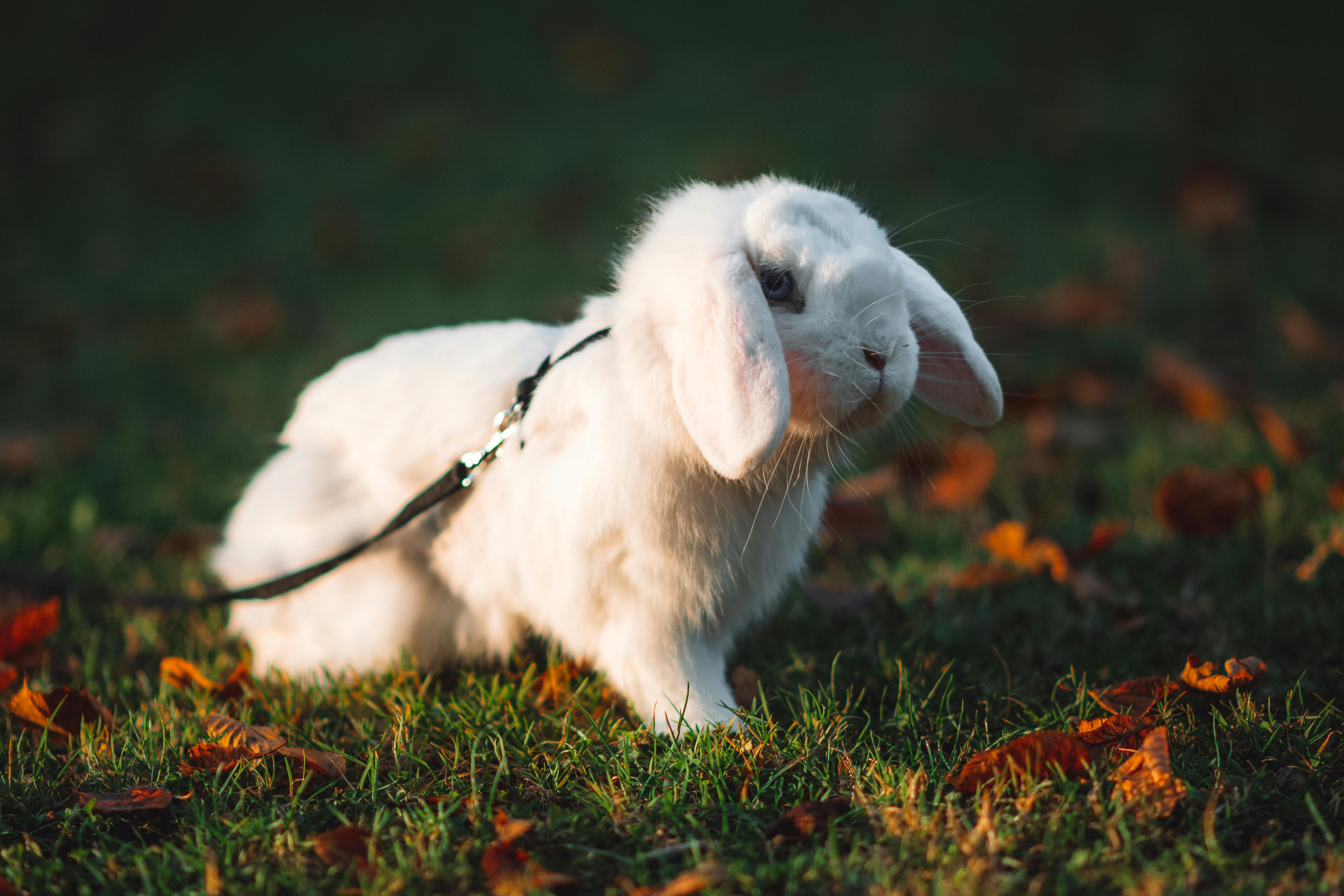
Caring for a Holland Lop rabbit is a rewarding experience, offering endless moments of joy and companionship. These adorable, floppy-eared bunnies are known for their friendly temperament and manageable size, making them a popular choice for pet owners. However, like any pet, Holland Lop rabbits require specific care to ensure they live a healthy and happy life.
In this complete care guide, we will provide comprehensive information on how to care for your Holland Lop, including diet, housing, grooming, health, and bonding tips.
Understanding Holland Lop Rabbits
Origins and History
The Holland Lop rabbit originated in the Netherlands, bred by Adriann de Cock in the 1950s by crossing the French Lop with the Netherland Dwarf. The result was a compact, friendly rabbit with distinctive floppy ears. Recognized by the American Rabbit Breeders Association (ARBA) in 1979, Holland Lops have since become one of the most popular rabbit breeds.
Physical Characteristics
Holland Lops are small, weighing between 2 to 4 pounds, with a muscular build and a dense, glossy coat. Their ears are their most distinctive feature, hanging down the sides of their face. They have a compact body, a broad head, and short, muscular legs.
Temperament and Behavior
These rabbits are known for their sweet, docile nature. They are social animals, enjoying the company of humans and other rabbits. They are also intelligent, curious, and can be trained to use a litter box and respond to basic commands. Their playful and affectionate nature makes them excellent pets for families and individuals alike.
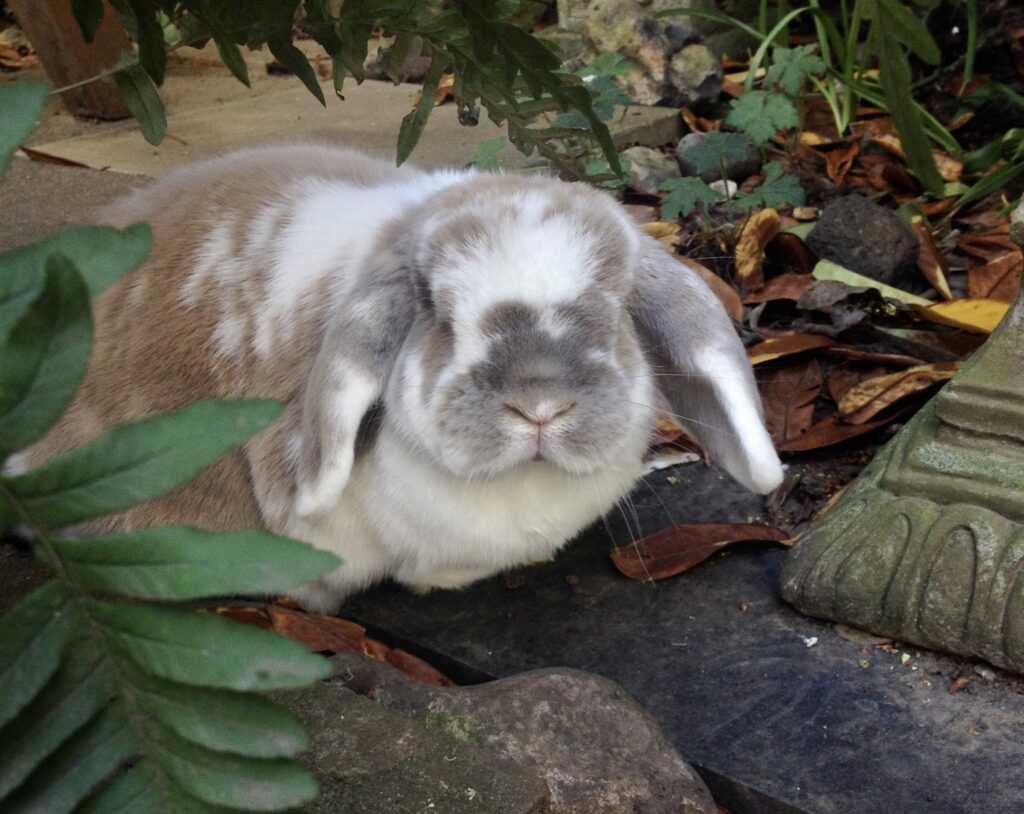
Setting Up the Perfect Home
Choosing the Right Cage
A suitable cage is crucial for your Holland Lop’s comfort and safety. The cage should be spacious enough for them to move around, with a minimum size of 24 x 24 inches (but more space is always appreciated!). Wire cages with a solid floor are ideal to prevent injury to their delicate feet as long as the cage is spot cleaned daily. A mesh floor can also be used and does a good job of keeping your Holland Lop from stepping or standing in any excrement or spilled water, but if you have a mesh bottom cage, you should also place something like a carpet square or small towel in the cage for your rabbit to rest their feet on.
The enclosure should have a secure door and be escape-proof.
Indoor vs. Outdoor Housing
While Holland Lops can be housed indoors or outdoors, indoor housing is preferable for better protection against predators and harsh weather. If housed outdoors, the enclosure should be secure, weatherproof, and elevated off the ground. Consider bringing your rabbit indoors during extreme weather conditions to ensure their safety and comfort.
Hutches can be a great option for outdoor housing and are often very aesthetically pleasing. Just make sure your hutch is secure from possible outdoor predators and cleaned regularly to prevent respiratory infections in your Holland Lop.
Creating a Safe Environment
Ensure the environment is rabbit-proofed, removing any potential hazards such as electrical wires and toxic plants. Provide hiding places and toys to keep them mentally stimulated and reduce stress. Consider adding ramps, tunnels, and different levels within the cage to create a stimulating environment.

Diet and Nutrition
Essential Dietary Components
A balanced diet is vital for your rabbit’s health. Their diet should consist mainly of high-quality hay (about 80%), fresh vegetables, and a 1/4 to 1/2 cup pellets. Ensure that any dietary changes are introduced gradually to avoid digestive issues.
Hay and Grass
Timothy hay, orchard grass, and meadow hay are excellent choices. Hay provides the necessary fiber to keep their digestive system functioning properly and helps to wear down their continuously growing teeth. Fresh grass can also be provided, but make sure it is free from pesticides and pollutants.
Typically, you can let your rabbit eat as much hay as they want. They’ll even chew on it when they’re bored. You have to be careful with this if you’re providing alfalfa hay, though.
Alfalfa hay is best when mixed with another hay like timothy hay. Alfalfa hay is high in calories and can cause unwanted weight gain when fed in excess.
Fresh Vegetables and Fruits
Introduce vegetables gradually to avoid digestive upsets. Suitable options include leafy greens like romaine lettuce, kale, and cilantro (never iceberg lettuce). Fruits can be given as occasional treats, such as apples (without seeds), strawberries, and blueberries. Avoid starchy vegetables like potatoes and limit fruit intake to prevent obesity.
Pellets
Choose high-fiber pellets formulated specifically for rabbits. Avoid those with added seeds, nuts, or dried fruits, as these can lead to obesity and other health issues. When picking out pellets, the greener they are, the better! Also, if your pellets are alfalfa based, try to avoid feeding alfalfa hay (too fattening).
Water
Provide fresh water daily using a water bottle or a heavy ceramic bowl to prevent tipping. Clean the water container regularly to ensure it remains hygienic.
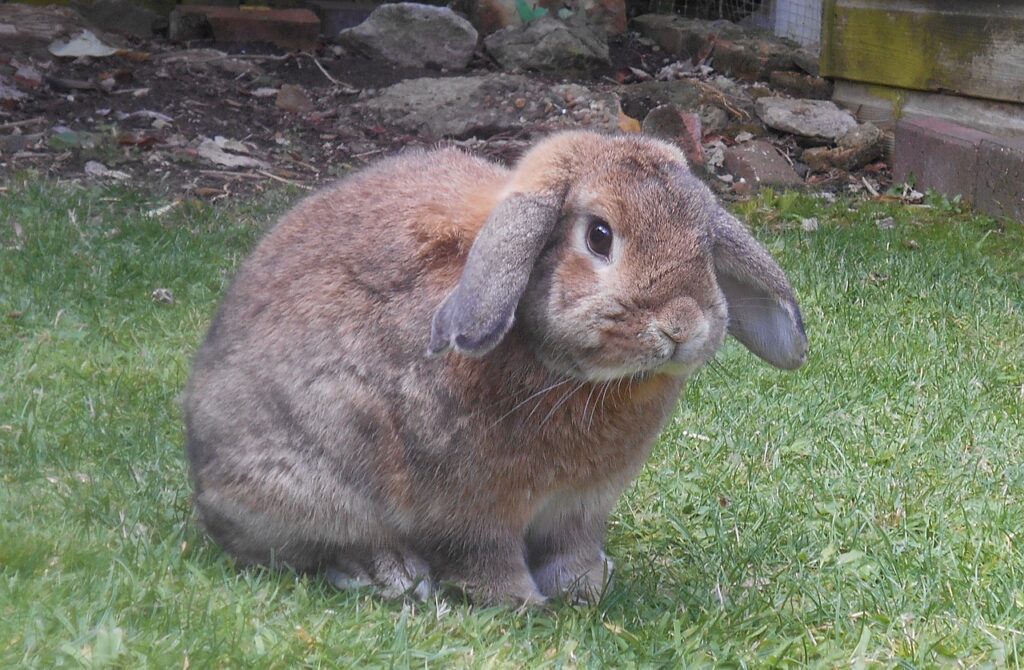
Grooming and Hygiene
Brushing and Fur Care
Holland Lops have dense fur that requires regular grooming to prevent matting and reduce shedding. Brush your rabbit at least once a week, and more frequently during shedding seasons. A slicker brush or a comb designed for small animals works best.
Nail Trimming
Regular nail trimming is essential to prevent overgrowth and injuries. Use rabbit-safe nail clippers and trim the nails carefully, avoiding the quick, which can cause bleeding. If you’re unsure, your veterinarian can demonstrate the proper technique.
Check out our nail trimming guide here!
Ear and Teeth Care
Check your rabbit’s ears regularly for signs of infection, such as redness or discharge. Keep an eye out for “dirt” in the ears, as this is a sign of ear mites.
Your rabbit’s teeth also need to be monitored for overgrowth. Providing plenty of hay and chew toys helps to wear down their teeth naturally. In some cases, dental issues may require professional veterinary care.
Bathing
Rabbits generally do not need baths and can become stressed if submerged in water. Instead, spot clean dirty areas with a damp cloth or an unscented baby wipe. If your rabbit gets particularly dirty, dry baths using cornstarch can be a gentler alternative.
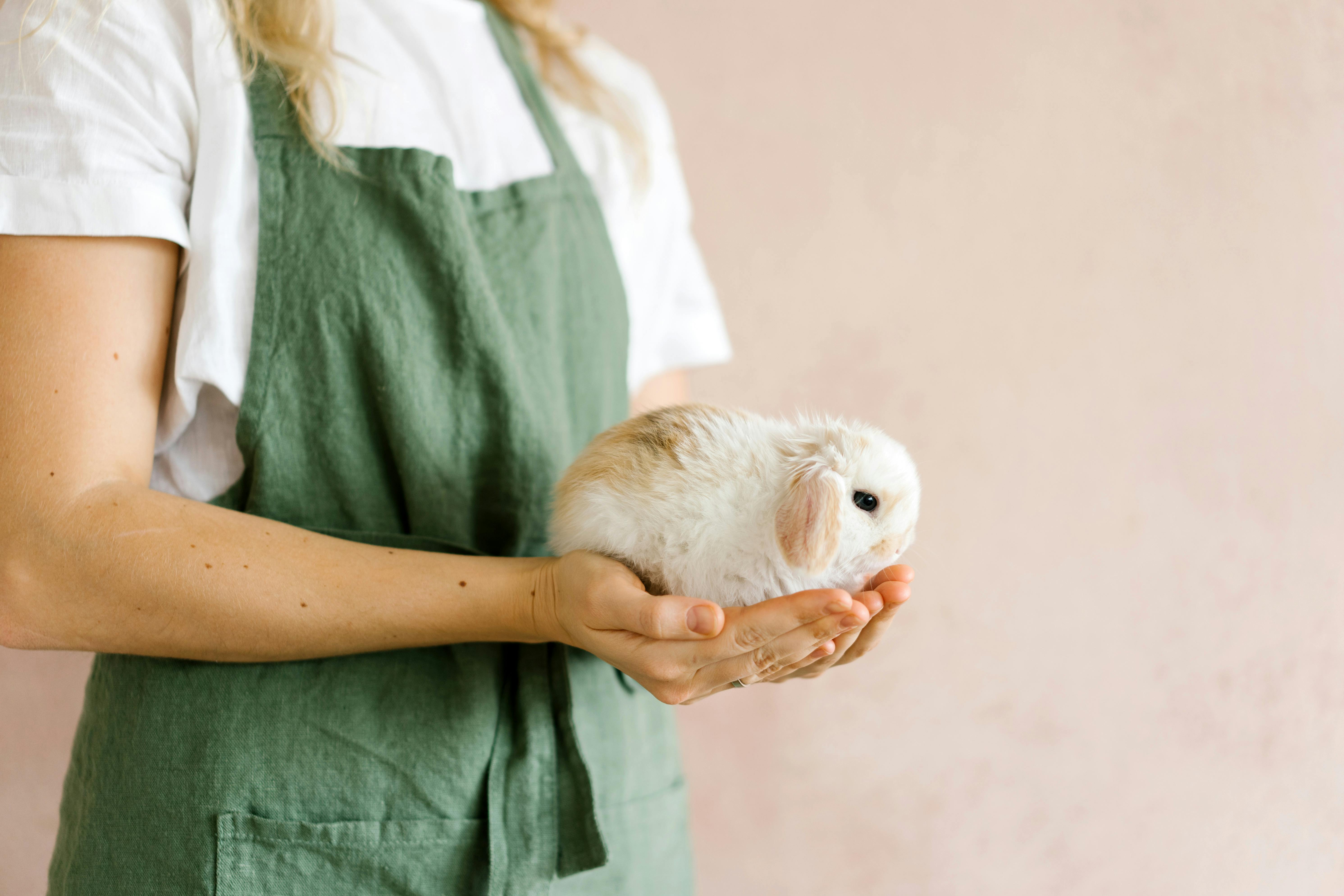
Health and Wellness
Common Health Issues
Holland Lops can be prone to certain health problems, including dental issues, gastrointestinal stasis, and respiratory infections. Regular vet check-ups are crucial for early detection and treatment. Be aware of signs like drooling, loss of appetite, or changes in stool, which can indicate health problems.
Signs of a Healthy Rabbit
A healthy rabbit will have bright, clear eyes, clean ears, and a shiny coat. They should be active, alert, and have a good appetite. Regular fecal output is also a sign of a healthy digestive system.
When to See a Vet
If you notice any changes in your rabbit’s behavior, appetite, or physical condition, seek veterinary advice promptly. Symptoms like lethargy, loss of appetite, or unusual discharge can indicate serious health issues. Regular wellness exams and preventive care can help catch potential problems early.
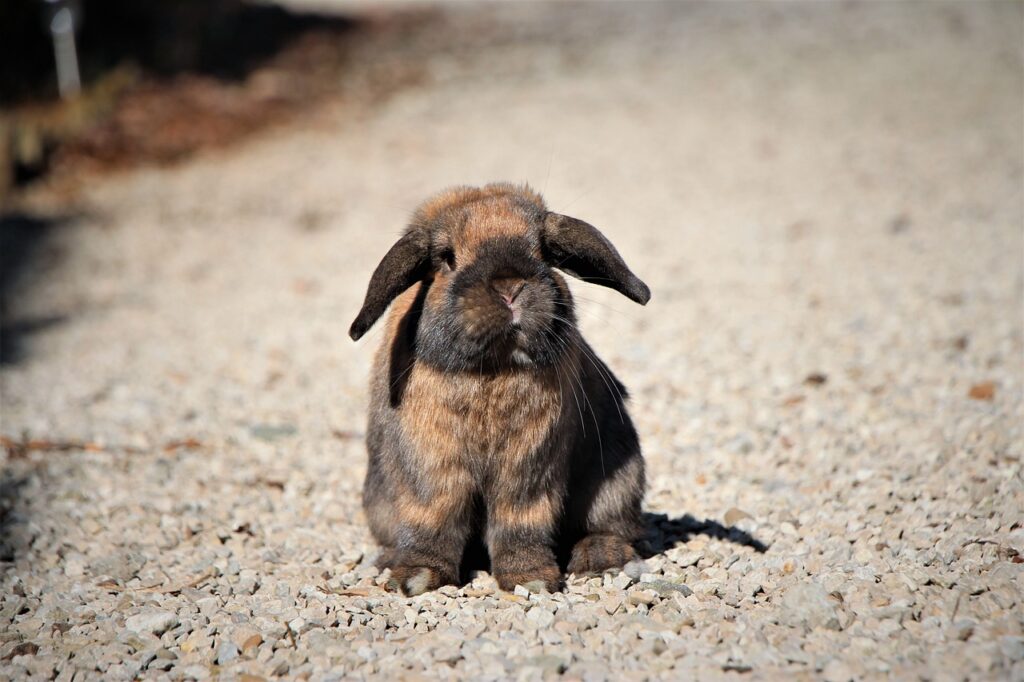
Bonding and Socialization
Building Trust
Spend time with your rabbit daily to build trust. Speak softly and handle them gently to help them feel secure. Gradual, gentle interactions can help your rabbit become accustomed to human contact.
Social Interaction
Rabbits are social animals and benefit from companionship. If possible, consider adopting a pair of rabbits. Ensure they are spayed or neutered to prevent unwanted litters and reduce aggressive behavior. Rabbits can form strong bonds with each other, providing emotional and social benefits.
Playtime and Exercise
Allow your rabbit plenty of time outside the cage each day to explore and exercise. Supervised playtime in a safe, enclosed area is essential for their physical and mental well-being. Interactive toys and tunnels can encourage physical activity and mental stimulation.

Training Your Holland Lop
Litter Training
Holland Lops can be trained to use a litter box. Start by placing hay in the litter box, as rabbits like to eat while they go. Reward them with treats and praise when they use the litter box correctly. Be patient and consistent, as training can take time.
Check out our Litter Box Training for Rabbits guide!
Basic Commands and Tricks
Rabbits can learn simple commands and tricks with patience and positive reinforcement. Use treats and gentle encouragement to train them to come when called, hop onto your lap, or even perform agility exercises. Training sessions should be short and positive to keep your rabbit engaged.
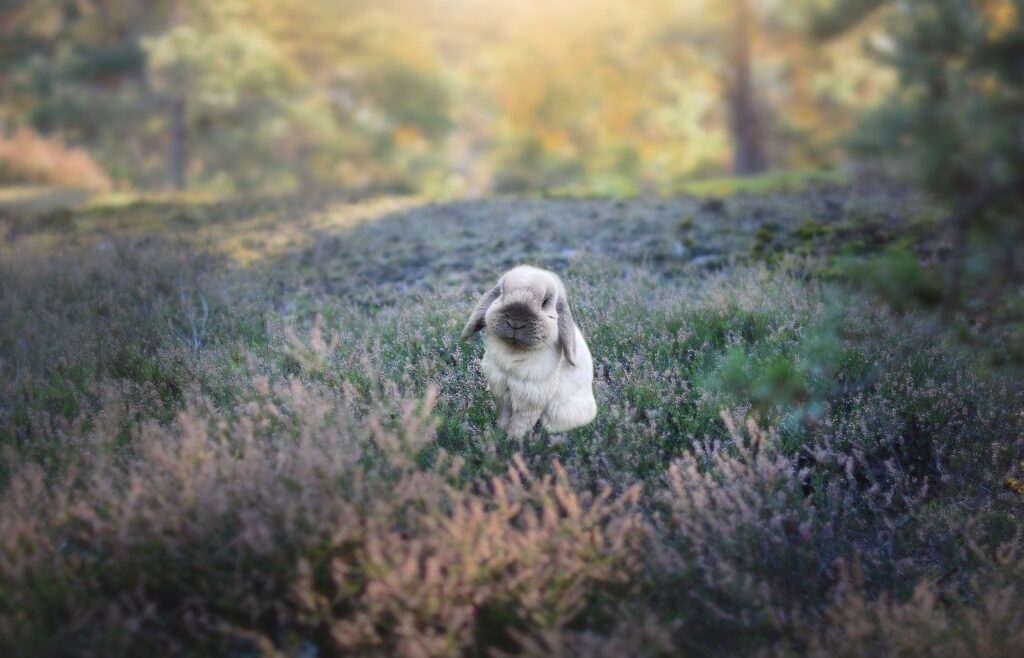
Creating a Routine
Daily Care Tasks
Establish a daily routine for feeding, cleaning, and bonding time. Consistency helps your rabbit feel secure and understand what to expect each day. This routine can include designated times for feeding, grooming, and play.
Cleaning the Cage
Spot clean the cage daily, removing soiled bedding and droppings. Perform a thorough cleaning weekly, replacing all bedding and sanitizing the cage with a rabbit-safe cleaner. Keeping the living area clean reduces the risk of infections and odors.
Monitoring Health and Behavior
Regularly observe your rabbit for any changes in behavior or appearance. Early detection of potential health issues is key to ensuring prompt treatment and maintaining their well-being. Keep a health log to track any changes or concerns.
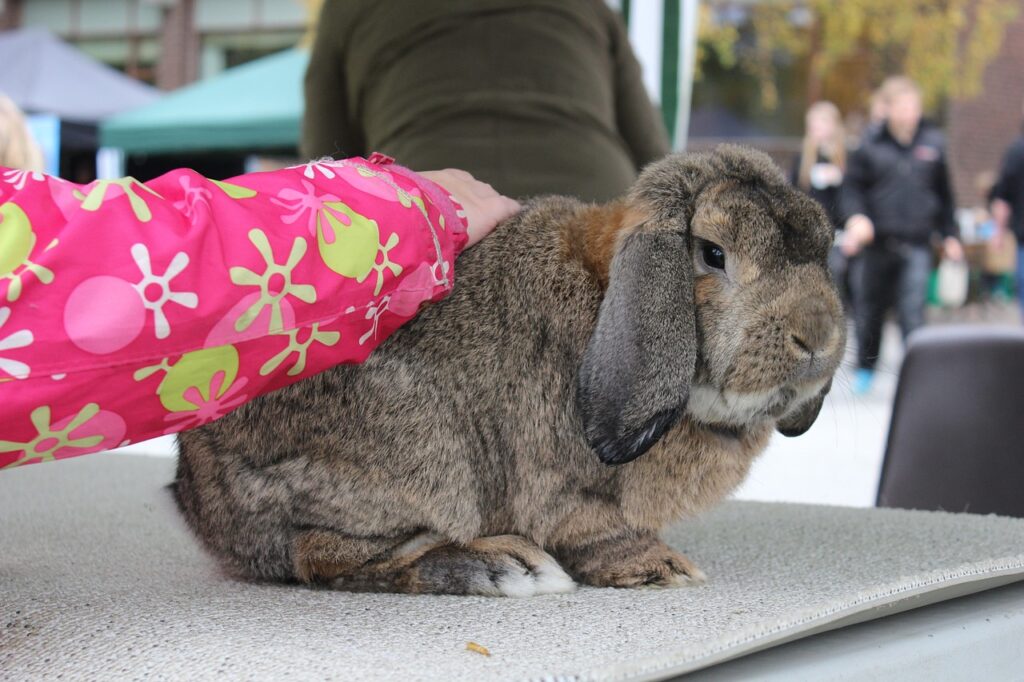
Toys and Enrichment
Mental Stimulation
Provide a variety of toys to keep your rabbit mentally stimulated. Toys such as chew sticks, tunnels, and puzzle feeders can prevent boredom and encourage natural behaviors. Rotate toys regularly to keep your rabbit interested and engaged.
DIY Toys
You can make simple toys at home using cardboard boxes, toilet paper rolls, and untreated wood. Creating new and interesting toys regularly keeps your rabbit engaged and entertained. Foraging toys can also be a fun way to provide mental stimulation and encourage natural behaviors!
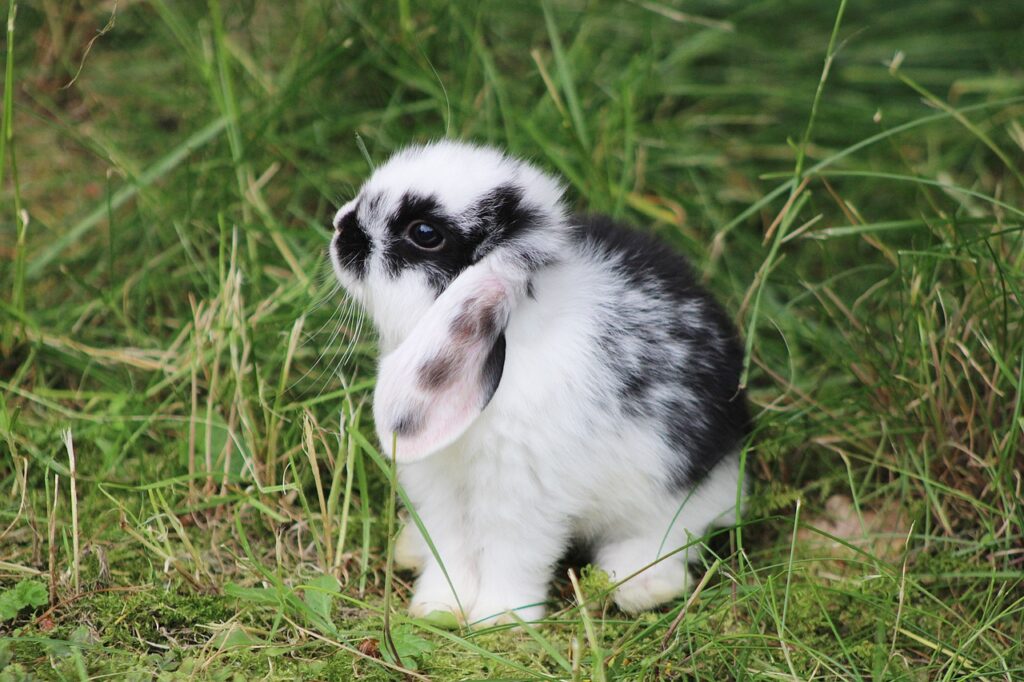
Special Considerations for Young and Senior Holland Lops
Caring for Baby Rabbits
Young rabbits need extra care and attention. Ensure they are eating a proper diet and gradually introduce new foods. Handle them gently to help them become accustomed to human interaction. Baby Holland Lops are more vulnerable to stress and health issues, so close monitoring is essential.
Senior Rabbit Care
Older rabbits may require special care, such as softer bedding and more frequent vet visits. Monitor their weight and adjust their diet as needed to maintain their health. Arthritis and dental problems are common in older rabbits, so regular veterinary check-ups are crucial.
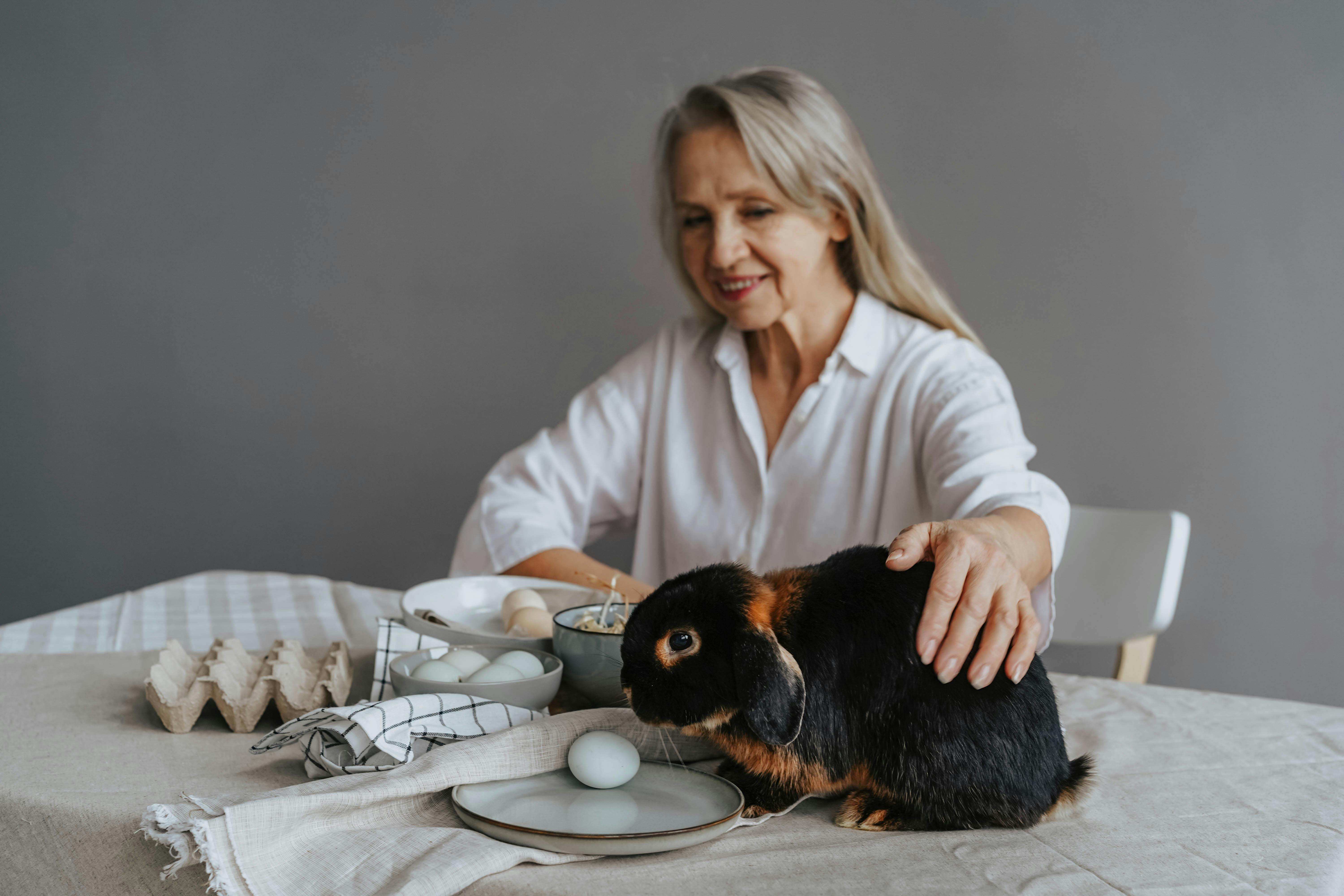
Traveling with Your Holland Lop
Preparing for Travel
One of the perks of Holland Lops is that their small size allows for easier travel!
If you need to travel with your rabbit, ensure their carrier is comfortable and secure. Line the carrier with soft bedding and include familiar items to help them feel at ease. Rabbits can become stressed during travel, so minimize trips to only necessary occasions.
Travel Tips
Keep the carrier in a cool, quiet area during travel and avoid excessive handling. If possible, set up their carrier so they have access to food and water as well as a litter box during travel. If this is not possible, make sure to take regular breaks to provide food, water, and a litter box. Upon arrival, set up a safe space for your rabbit to explore and settle in.
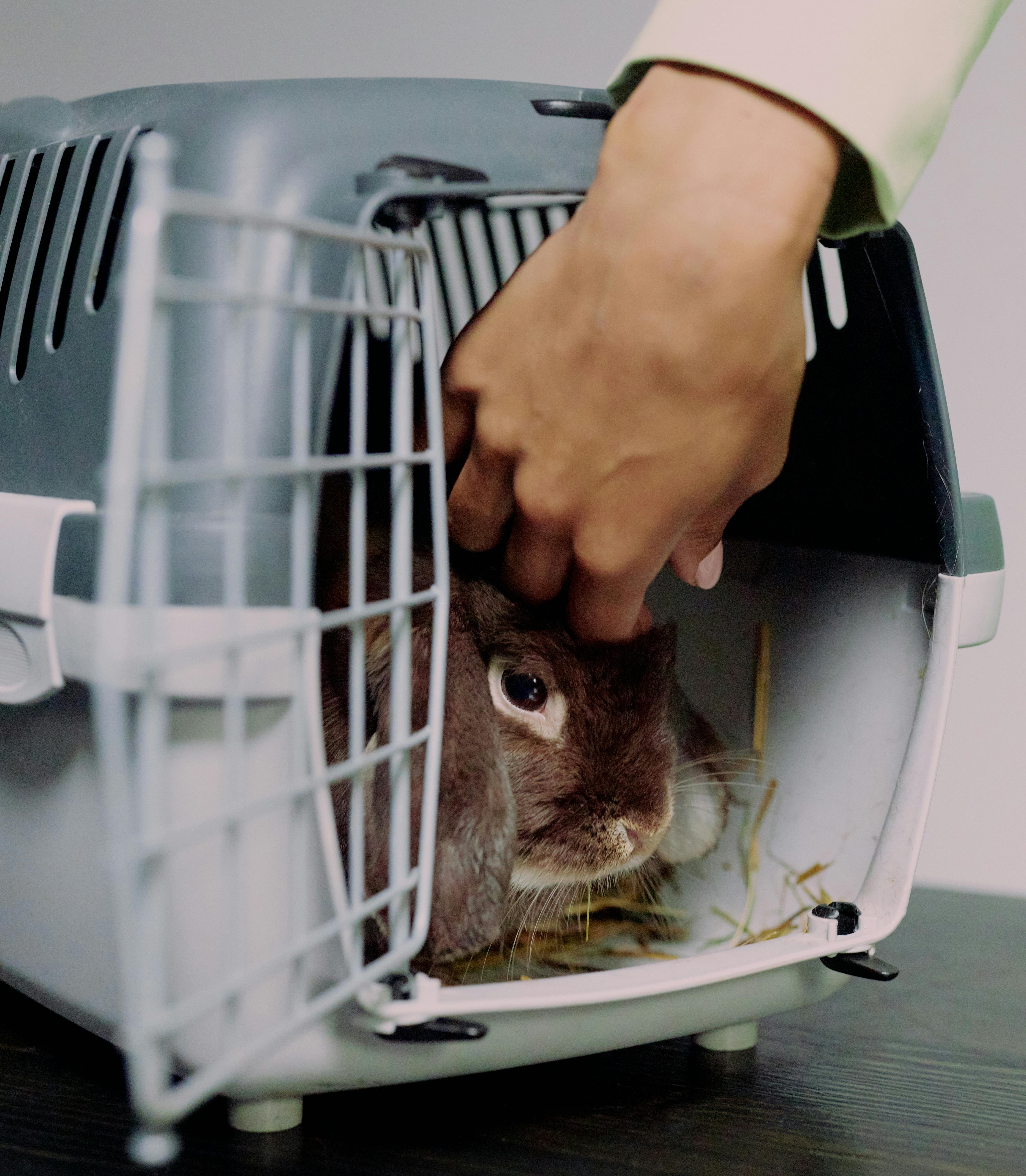
Finding a Rabbit-Savvy Vet
Choosing the Right Vet
Look for a veterinarian with experience in rabbit care. Ask for recommendations from other rabbit owners or check with local rabbit rescue organizations. A vet experienced with rabbits will be more familiar with their specific health needs and concerns.
Regular Check-Ups
Schedule regular veterinary check-ups to monitor your rabbit’s health and catch any potential issues early. Preventive care, including dental checks and weight monitoring, is crucial for maintaining your rabbit’s health.
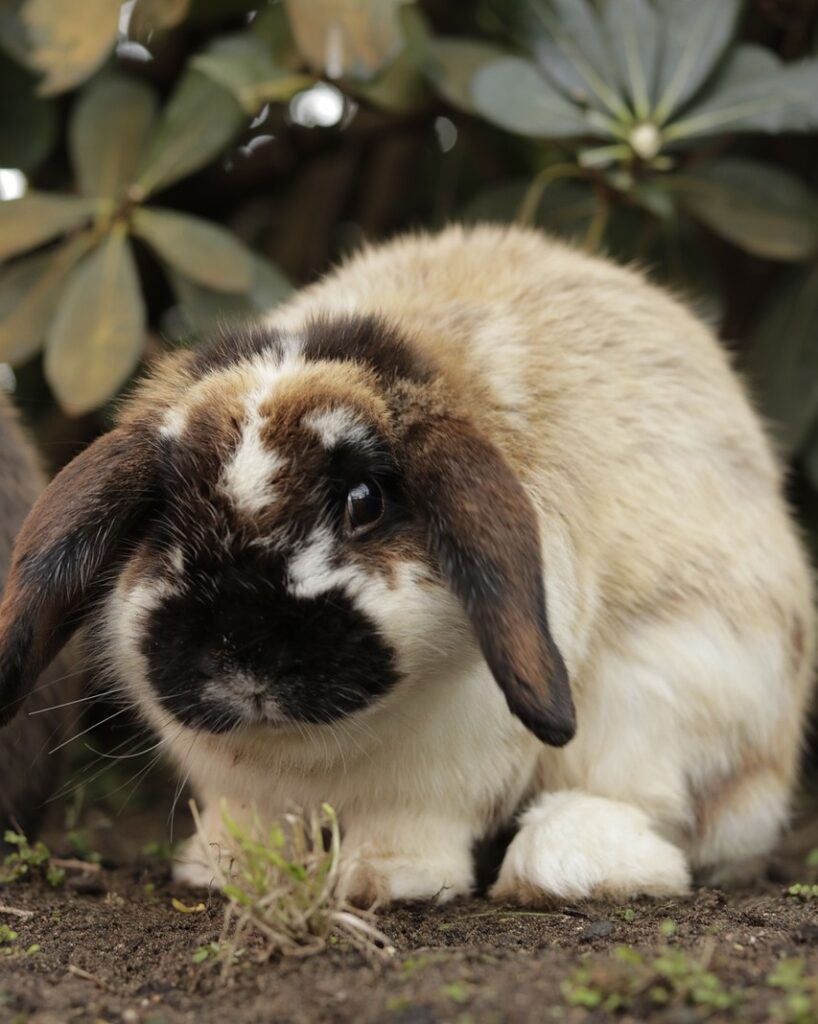
Understanding Rabbit Behavior
Body Language
Learning to read your rabbit’s body language can help you understand their needs and emotions. Signs of a happy rabbit include relaxed posture, purring (soft teeth grinding), and playful behavior. Conversely, signs of distress or discomfort include thumping, hiding, or aggressive behavior.
Recognizing Stress and Anxiety
Rabbits can become stressed or anxious due to changes in their environment, loud noises, or handling. Signs of stress include hiding, thumping, and changes in eating habits. Create a calm, safe environment to reduce stress. Providing a consistent routine and familiar surroundings can help alleviate anxiety.
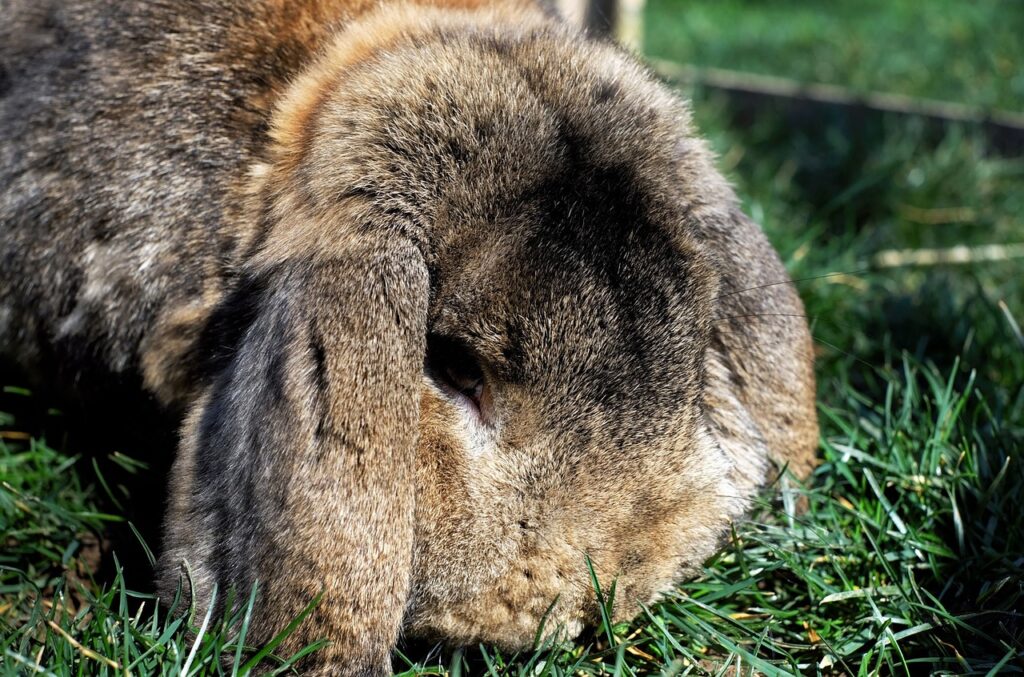
FAQs
What should I feed my Holland Lop rabbit?
Your Holland Lop’s diet should consist mainly of high-quality hay, fresh vegetables, and a 1/4 to 1/2 cup pellets daily. Provide fresh water daily.
How often should I groom my Holland Lop?
Brush your rabbit at least once a week, and more frequently during shedding seasons. Regular grooming helps prevent matting and reduces shedding.
Can Holland Lops be litter trained?
Yes! Holland Lops can be litter trained. Use a litter box with hay to encourage them to use it and reward them with treats and praise.
What are common health issues in Holland Lops?
Common health issues include dental problems, gastrointestinal stasis, and respiratory infections. Regular vet check-ups are crucial for early detection and treatment.
How much exercise does a Holland Lop need?
Provide your rabbit with plenty of time outside the cage each day for exercise. Supervised playtime in a safe, enclosed area is essential for their physical and mental well-being.
What is the lifespan of a Holland Lop rabbit?
With proper care, Holland Lop rabbits can live between 7 to 10 years, and some may live even longer.
Do Holland Lops get along with other pets?
Holland Lops can coexist with other pets, but introductions should be done gradually and under supervision. Each animal’s temperament plays a significant role in how well they get along.
How do I handle my Holland Lop properly?
Support your rabbit’s body when picking them up, holding them close to your chest to make them feel secure. Avoid lifting by the ears or scruff, as this can cause injury.
Can Holland Lops be trained to do tricks?
Yes! With patience and positive reinforcement, Holland Lops can learn simple tricks and commands. Use treats and gentle encouragement to train them.
Is it necessary to spay or neuter my Holland Lop?
Spaying or neutering is recommended to prevent unwanted litters and reduce aggressive or territorial behavior. It also has health benefits, such as reducing the risk of certain cancers.
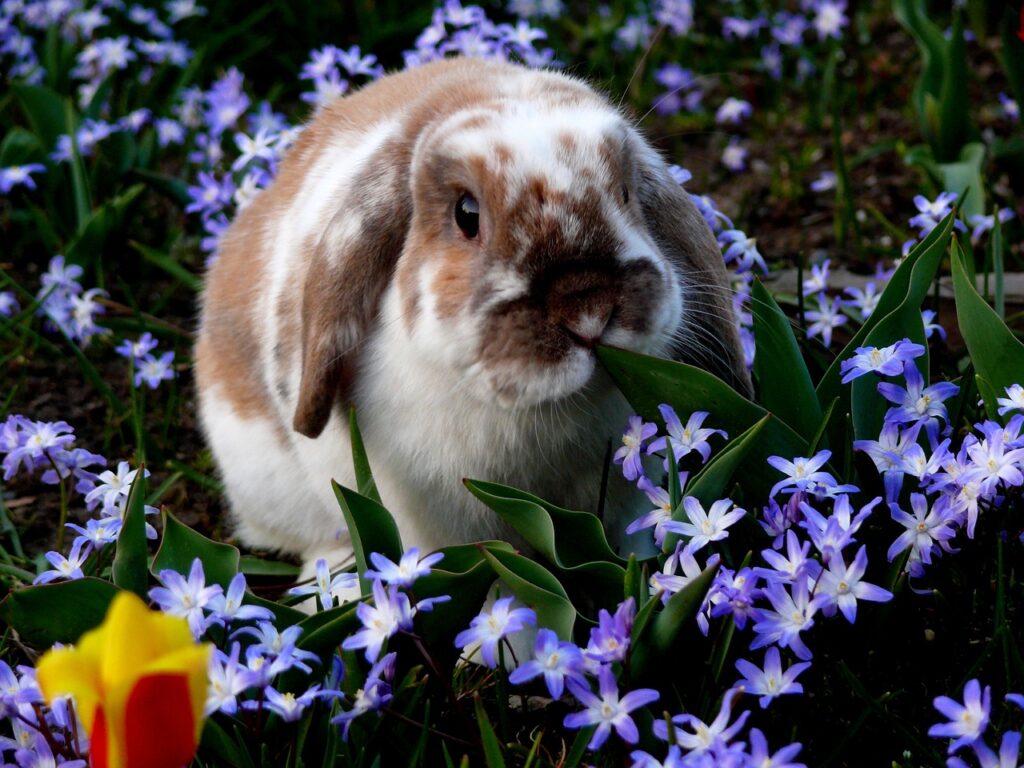
Conclusion
Caring for a Holland Lop rabbit involves providing a balanced diet, a safe and stimulating environment, regular grooming, and health monitoring. Building a strong bond with your rabbit through gentle handling and social interaction is key to their happiness. By understanding their needs and behaviors, you can ensure that your Holland Lop lives a healthy, fulfilling life. Whether you are a first-time rabbit owner or an experienced pet parent, these guidelines will help you provide the best care for your furry friend!

